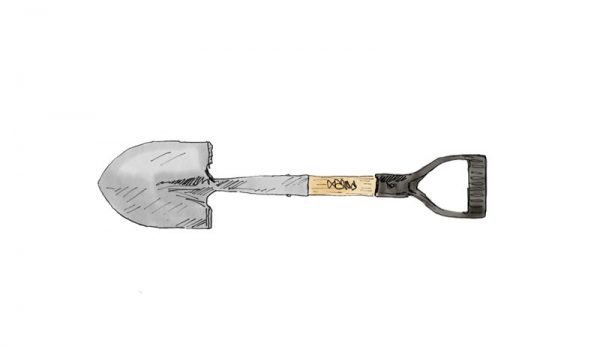
It’s often said that, in order to do a job correctly, one must have the proper tools. This is a reliable statement, regardless of the task at hand. Want to sink a nail into a piece of lumber? You will need a hammer. Ready to flip a hamburger before it burns on the grill? Reach for the spatula.
And if you’re looking to start a garden, you’ll find that a few tools are critical to the task. This is true regardless of whether you’re breaking ground to delight and feed yourself and your family, or if you’re starting a market garden in hopes of providing sustenance to the community and income for yourself.
The Essential Shovel
There is a small handful of garden tools that I consider absolutely essential for new gardeners and experienced growers. The list of necessary tools for more serious growers on large plots will certainly be longer, but I can quickly list three that are critical for any grower, regardless of growing space. And at the top of that list is the shovel.
I know you might be thinking, “Really? A shovel?” But think about it—a good shovel will allow gardeners to succeed at everything from creating raised garden beds from scratch to seeing a crop through to harvest.
Yes, a shovel is about as basic as it gets, but when starting an efficient garden, we must start with essentials. And no tool is more essential to growers than a shovel. I truly believe that, no matter the gardener, every grower needs to own at least one good shovel.
Choosing a Shovel
A good digging spade should be well made, with a strong handle of wood, plastic or steel and well-bolted to the shovel’s blade. For building raised beds, a blade that tapers to a point is best. This style of blade is more effective for gardeners than flat- or narrow-bladed shovels.
A good shovel for digging, whether you’re building raised beds or planting trees, should include footrests to reduce gardener fatigue. And a proper grip at the end of the handle is more ergonomic for long periods of use.
A longer-handled shovel will be useful in the garden when scooping soil to apply to bed tops and along the edges of row covers, which can help to prevent insect damage. On the other hand, a shorter-handled shovel is more convenient and ergonomic for digging.
Both have their place in your garden shed.
Shoveling Raised Beds
As indicated above, a good shovel is an indispensable tool when building a raised garden bed. Wooden boxes aren’t necessary—you just need to move dirt from one spot to another to create an elevated mound that slopes downward to the soil surface.

We call these growing areas Permabeds (permanent raised beds). They maximize local soil to form an ideal growing environment and avoid weeding difficulties that occur when different materials meet. In essence, the edge is always hard to manage (infilled soil + wooden sides = weeds getting big).
Stay tuned for more information on permabeds in future articles. For now, though, suffice to say they have many benefits for home and commercial growers, and they all start with a good shoveling.
Using your shovel, dig into the soil, then create heaped paths by applying that soil to the adjacent bed. The mounded bed that forms should be 8-12 inches above the flat garden plot. Once your bed is formed, you’re ready to plant.
Harvest Time
When the growing season in your raised bed is over, your shovel also makes an effective harvest tool. At harvest time, you can use your shovel to dig up carrots, potatoes, sweet potatoes and more.
Granted, a good garden fork can be more effective for many crop harvests, and larger growers may opt for a tractor implement, but the garden shovel can certainly serve as a multi-functional tool. And that’s the beauty of a good shovel—you gain more bang for your buck when you put this tool to use for a number of jobs during the growing season.
Planting Trees
One of the best services a good shovel provides is planting trees in spring.
Every year I plant trees along fenceline shelter belts, in orchards and edible landscapes. Here, a good quality shovel that is robust and ergonomic not only does a good job during a long day of planting, but it will continue to do so for years to come. And your body will remain in good shape so that you can keep on planting!
You don’t need to break the bank to start growing your own food—a shovel can take you from building beds in spring to harvesting in fall. Whether gardening or creating edible landscapes on your own property or within your community, a shovel gets the digging done.
Earlier I said I could quickly think of three essential tools for the beginning gardener. In my next article, we’ll cover the other two—a proper garden rake and an effective hoe for weeding.




